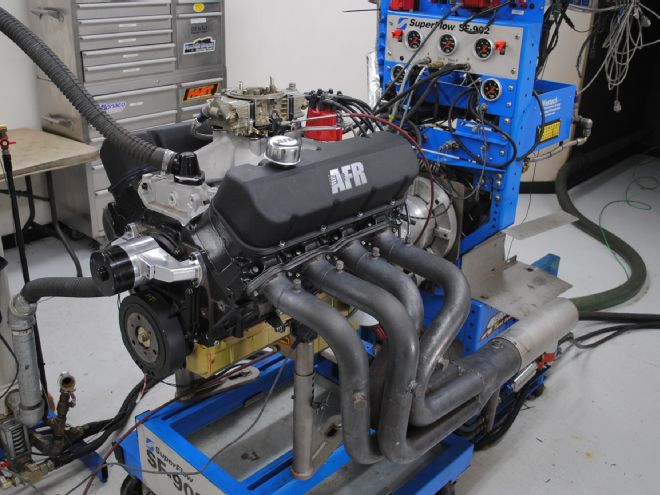
Here is a fact that every big-block Chevy enthusiast knows (or thinks they know): Oval port heads are only good for low-rpm, low-horsepower passenger cars and trucks and rectangle-port heads are for making serious power. I mean, given the choice, what Chevy enthusiast in their right mind would pick oval-ports over a set of rectangle-port heads for their performance build?
The reason behind the loyalty to a particular port shape is the marketing employed for years by both Chevrolet and the aftermarket. From the very beginning, performance big-blocks like the L72, L88, and LS6 all came factory equipped with the performance-oriented rectangle-port heads. The aftermarket followed suit by offering their own versions of these popular casts, and so it went for big-block owners. It is tough to combat this type of marketing, but the reality is that performance cylinder heads are not port-shape specific. Quite the contrary, performance heads are (like all parts) application specific.
This test of the AFR 265 oval-port heads is a perfect example of application-specific cylinder heads. It also serves as a classic example of not only how sometimes less really is more, but also how oval-port heads sometimes offer more performance than rectangle-port heads. For an all-out 565 or 572 stroker, sure, we’d choose big rectangle-port heads, but what about a little 396? For that application, huge port volumes might not be the way to go and the oval-port heads might be a better choice, unless you planned on zinging the mini big-block past 8,000 rpm.
How about a 600hp 454? Given that the baddest factory 454 (the LS6) was only rated at 450 gross hp, and it sported rectangle-port heads. So, should something making considerably more power be sporting the same head gear? We decided to flesh out our theory that oval-port heads actually belong on a 600hp 454 by doing a little test. To illustrate just how impressive the current crop of oval-port heads are, we built a healthy 454 test engine and ran two sets of heads back-to-back on the engine dyno. The 454 in question actually displaced 466 cubic inches thanks to an overbore. The four-bolt short-block’s main players are a Scat/JE forged rotating assembly and a Comp Cams Xtreme Energy XR294HR hydraulic roller cam. The XR294HR offered a 0.540/0.560 lift split, a 242/248 duration split, and tight 110-degree LSA. Comp Cams also supplied a double roller timing chain, hardened pushrods, and stainless roller rockers for our big-block. Additional components included a Milodon oiling system, including pan, pickup, and internal windage tray; an Edelbrock Victor Jr. intake (Weiand Team G with stock rec-port heads) manifold; and Holley 950 HP carb. Exhaust exited through a set of 2.25-inch dyno headers and spark was provided by a complete MSD ignition, including billet distributor, plug wires, and Digital 7 amplifier.
The dyno test involved comparing a set of (way too heavy) stock rectangular-port heads (088 casting number) to a set of (comparatively light) AFR 265s. The open-chamber, rectangular-port heads featured 119cc chambers, a 2.19/1.88 valve combination, and a Comp Cams valvespring upgrade for use with our hydraulic roller cam. Since power is a function partly of head flow, we flow tested each head before the dyno session. The stock heads checked in with peak flow numbers of 328 cfm while the AFRs flowed 345.
Putting these numbers into perspective is the common rule of thumb that the power potential of a cylinder head is roughly twice the maximum airflow through one port. Most mild street engines never achieve this level, while dedicated race engines often exceed this rule, but the formula is nonetheless accurate (also makes for easy math). If we apply this airflow formula, we see that the factory rectangle-port heads can support over 600 hp. The question is now, does that potential equate to real power?
Airflow Data: cfm @ 28-inches of Hg Stk 088 AFR 265 Lift In Ex In Ex 0.05 32 27 37 30 0.1 75 56 73 63 0.2 143 112 164 141 0.3 204 142 241 196 0.4 246 166 298 236 0.5 287 188 332 260 0.6 318 192 342 274 0.65 328 197 345 280
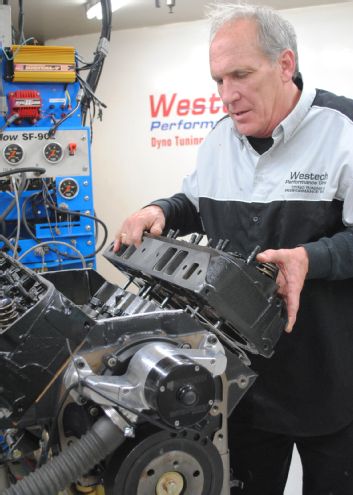
01. Are these heavy, cast-iron, rectangle-port BBC heads still the hot setup?
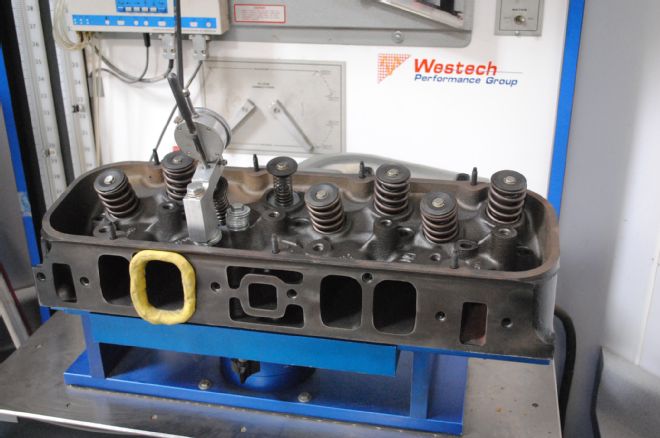
02. Thanks to big 320cc intake ports and a 2.19/1.88 valve package, the big rectangular-ports offered decent peak flow numbers. Unfortunately, the power potential offered by the flow numbers was never realized on the dyno.
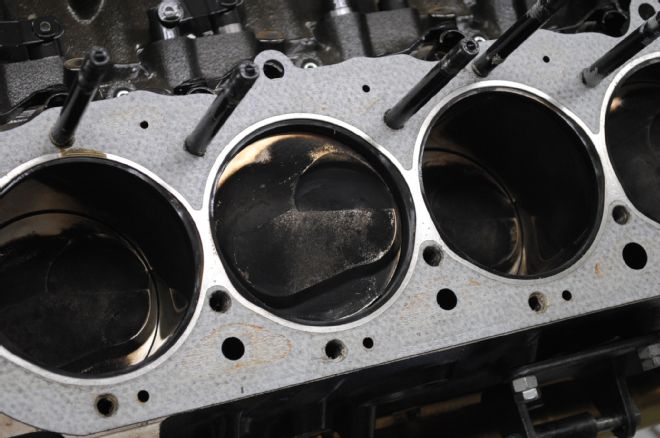
03. The 466 BBC test engine featured forged internals from Scat and JE pistons as well as a healthy XR294HR hydraulic roller cam from Comp Cams. Ever present were the ARP head studs and Fel-Pro head gaskets.
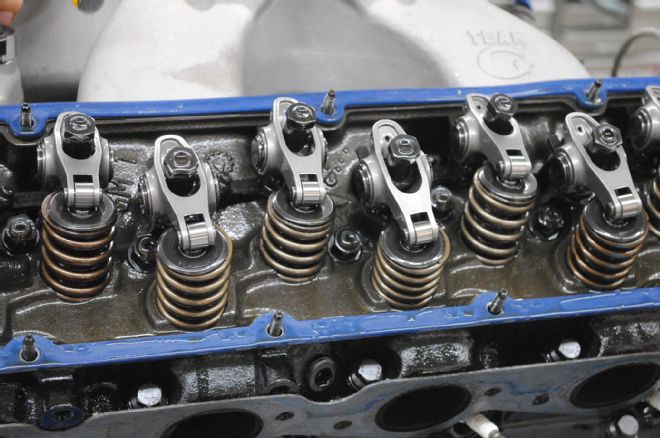
04. Comp Cams also supplied a set to 1.7:1 roller rockers and hardened pushrods. The stock heads were upgraded with a valvespring package from Comp Cams to eliminate valve float.
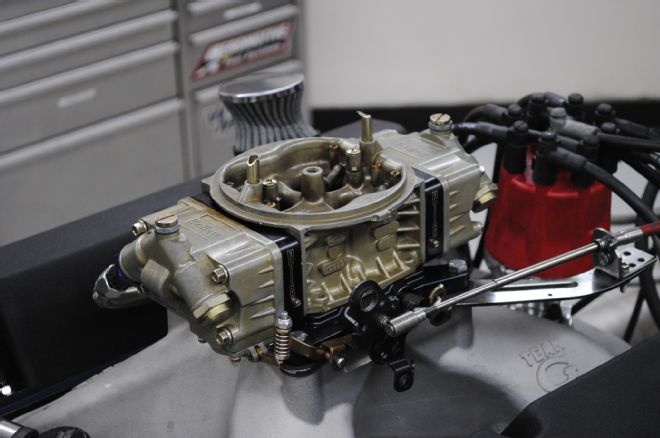
05. The rectangle-port heads required a dedicated intake. We relied on a Weiand Team G single-plane intake topped with a Holley 950 HP carburetor.
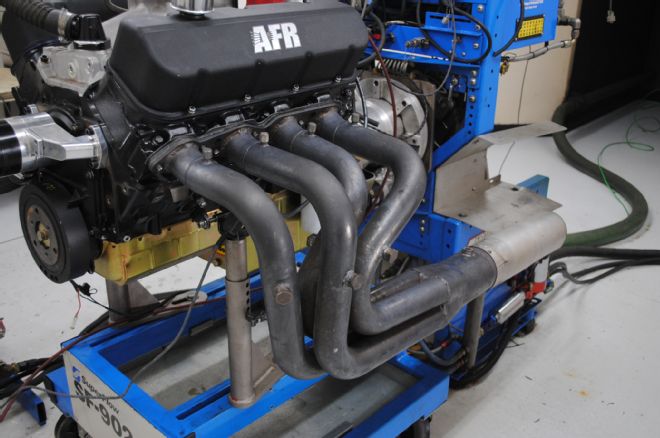
06. To ensure adequate exhaust flow, we selected a set of 2.25-inch dyno headers.
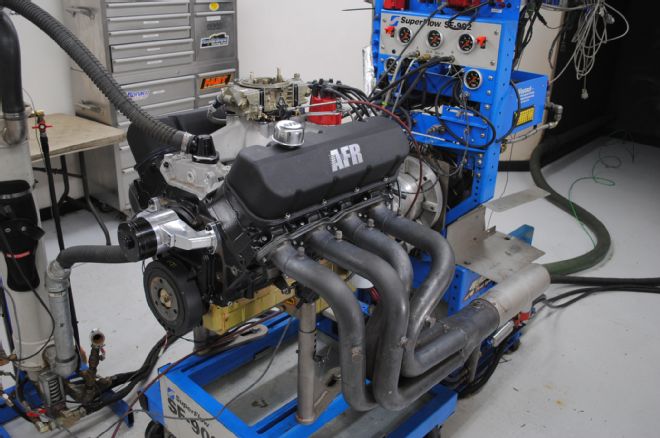
07. As always, we performed minor jetting and timing sweeps to maximize power production. After tuning, the iron-headed 466 produced peak numbers of 541 hp and 513 lb-ft of torque. Torque production with the rectangle-port heads exceeded 500 lb-ft for a 1,000-rpm spread, from 4,440 rpm to 5,500 rpm.
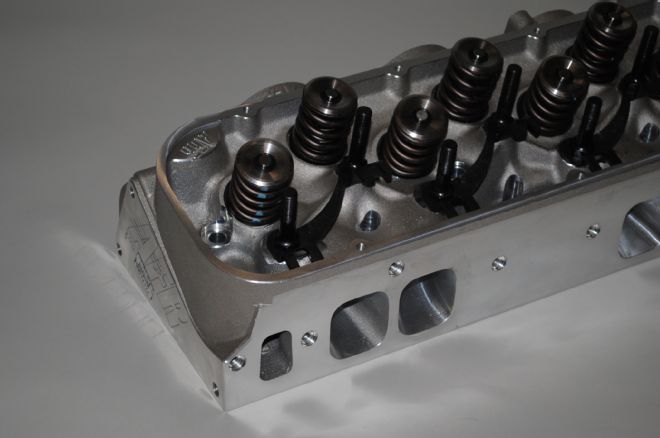
08. Despite offering intake ports that were nearly 40cc smaller than the factory rectangle-port heads, the AFR 265s offered more flow and power. The heads were equipped with a spring package that allowed us to safely rev the BBC to 6,500 rpm.
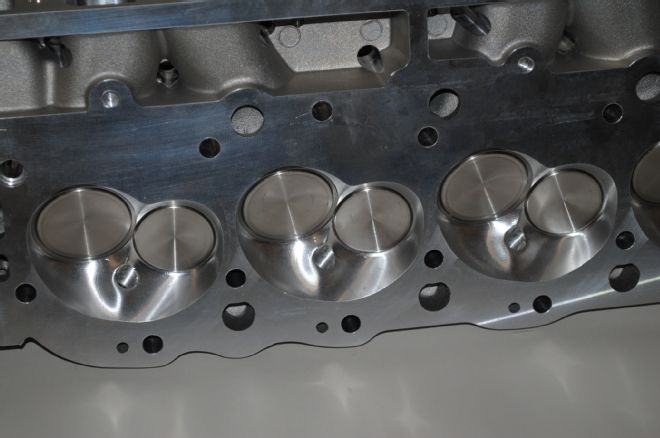
09. Like the factory rectangle-port heads, the AFRs were equipped with a 2.19/1.88 valve package, but the AFRs also offered a smaller (112cc), fully CNC profiled combustion chamber.
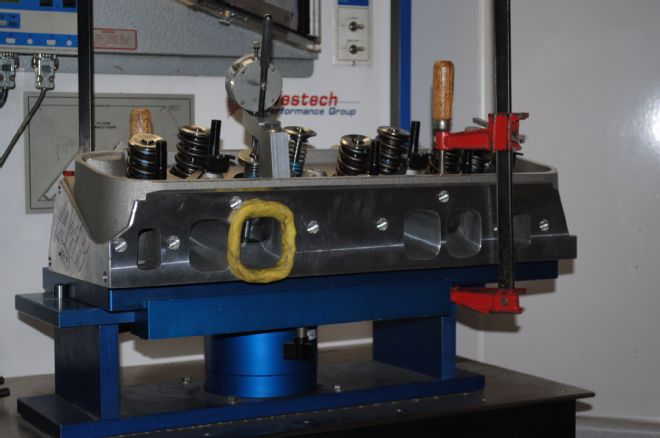
10. With peak flow numbers of 345 cfm, the smaller AFR 265s out-flowed their stock counterparts. All the more impressive is the fact that the AFRs offered massive mid-lift flow gains, as much as 53 cfm at 0.400 lift. Exhaust flow was even more impressive, as the AFRs out-flowed the stockers by over 80 cfm! More flow through a smaller hole equals more power.
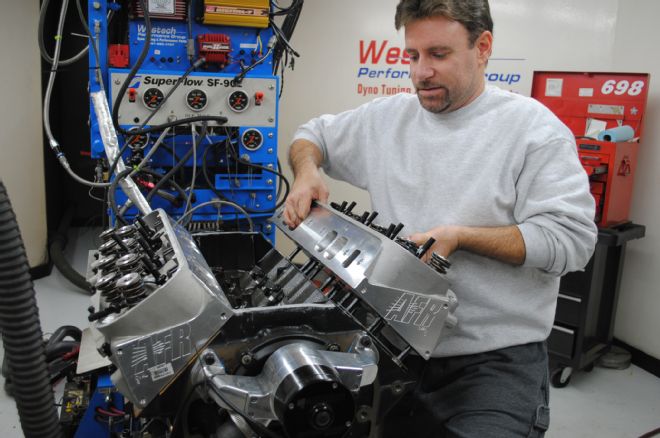
11. With the Rat still hot from the previous dyno pull, off came the stock heads and on went the AFRs. Lifting the aluminum AFR BBC heads, very cool. Lifting the iron BBC heads, not so much.
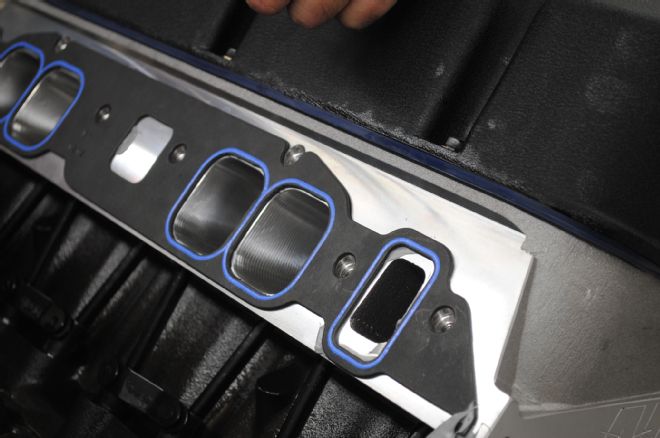
12. We made sure to install the Fel Pro intake gaskets with care.
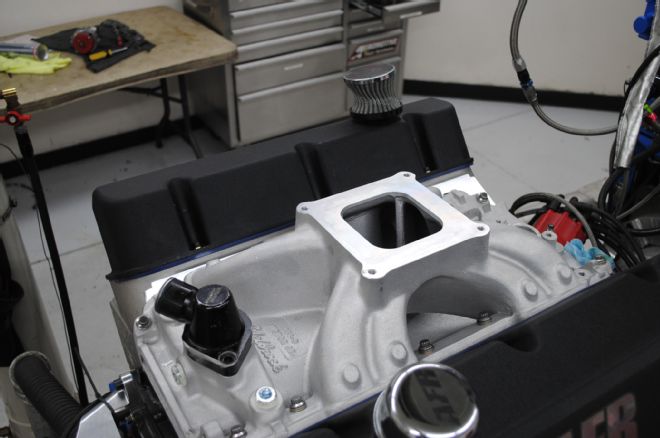
13. On went the Edelbrock Victor Jr. (oval-port) intake manifold.
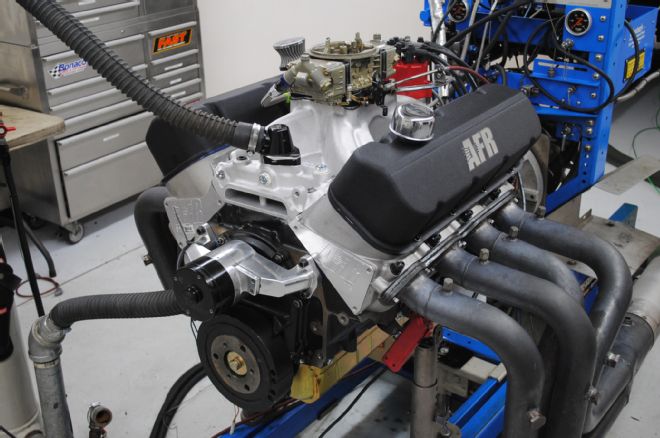
14. Run once again with the Holley 950 HP carburetor, the AFR-headed 466 churned out peak numbers of 622 hp and an amazing 569 lb-ft of torque. Not only was peak power up, but the oval-port heads improved torque production throughout the entire rev range.
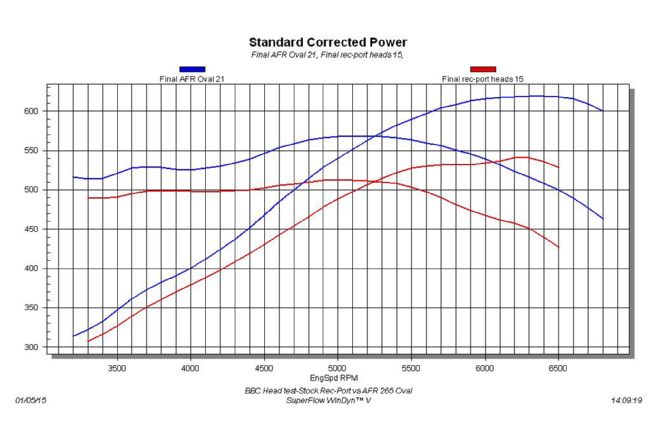
15. While everyone will talk about the big peak power gains (620 hp vs. 541 hp), the reality is that this graph illustrates so much more. Check out not only the big gains at the top of the rev range but that gains were offered from below 3,500 rpm right past 6,500 rpm. The only thing better than having more peak power is having more power everywhere. You will enjoy the torque gains on a daily basis, even without having to zing the engine to redline. Credit the massive flow through small port volumes for the impressive average power production.